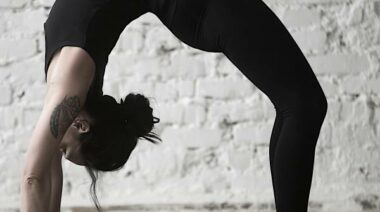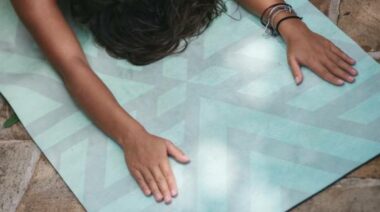The second weekend of my Yoga Alliance RYT 200 teacher training was full of more “aha” moments. I mentioned last time how much I’m enjoying the large group dynamic we have in our class, and I was reminded of it after attending class again. It’s amazing to see how many nuances each asana has when you account for the differences between our bodies.
Me and my yoga buddy, Kelley.
In yoga there’s a tendency to think every pose should look one perfect way. What I’m learning is that your downward dog might look different from mine, and that’s okay. You might hear teachers use cues like, “Press your heels to the ground,” “Press into your fingers,” and “Straighten your back legs.” But for you, following these cues may not engage the muscles in a way that is enriching or strengthening.
One of the things we have to do in order to obtain our certification is attend twenty yoga classes with RYT teachers. I wish all fitness certification bodies should follow suit in requiring that trainees attend classes. Observing other teachers has been a real eye-opener, both in terms of planting seeds for how I want to teach in the future, and also showing me what I don’t want to do.
For example, for one of my observations, I attended class with my husband. The first twenty minutes of class were a pranayama practice in a seated position with our legs crossed. I work at home, so I sit this way throughout most of the day and find it comfortable. But my poor husband, who has tight hip flexors, was all hunched over the whole time and obviously uncomfortable. The teacher took no notice despite the fact there were only five students in the class. It made me realize how important it is to be attentive to each individual, so every person can get the most out of their practice.
My teacher DeLora touched on this topic when she spoke about the art of holding space. We discussed how simple things like sensory details (smells, sounds, tone of voice) and our own habits as teachers (how we speak, whether or not we are conversational with our students) can guide our class and make it most enriching for all involved.
I’m Not in Kansas Anymore
One of the things that has stood out to me most during these first few sessions is how different yoga training is from personal training. For example, the cues we use in a gym setting are often not appropriate for a yoga class.
This came up when we were discussing how to cue or teach the basic movements of each pose. For example, you might say “Stand with the feet hip distance apart,” or “Extend your hands over your head.” Several words that are used frequently in a gym setting came up as examples of words you don’t want to use when teaching yoga, such as:
- Push
- Pull
- Spread
- Tighten
- Tense
- Clench
…to name a few. We discussed how the words we use as yoga teachers can protect our students from over-reaching and doing damage to their joints and soft tissue. The words we use convey much more than a bodily action – they also suggest how you should do it. Words like the ones above suggest that we are working to a limit, which isn’t necessarily the point of yoga and can be counterproductive or even dangerous.
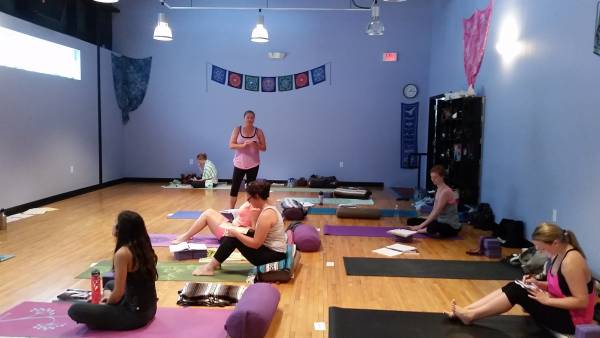
Our “classroom.”
How Does This Pose Serve Me?
We all want to look like those bendy people on the cover of Yoga Journal. But how often do I step back and ask how this pose is serving me? Not often. I often find myself getting more caught up in how I look from the outside.
A good example of this is my upward dog, which DeLora helped me with on the second day of training. Before, my upward dog looked like this:
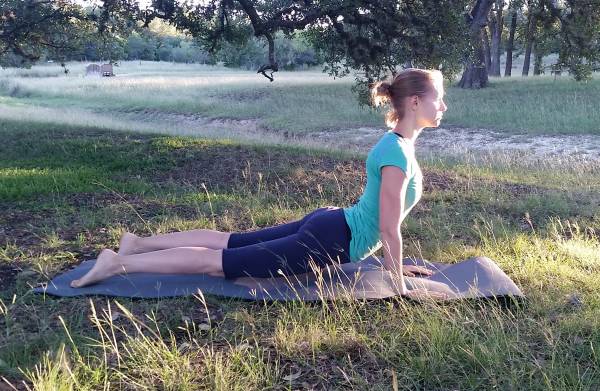
Ahhhh, this feels so good. But there’s not much core engagement going on here – just a lot of extension in the lower back (and even though it feels good now, there’s a lot of stress as well that might not feel so good tomorrow).
DeLora showed me how I was actually leading with my low back. She also corrected my shoulder position. I have a tendency to round my shoulders forward, so I was counteracting this by very consciously drawing my shoulderblades together. DeLora helped me create more space between my shoulderblades while also activating my core and drawing my ribs down. The resulting pose looks and feels quite different:
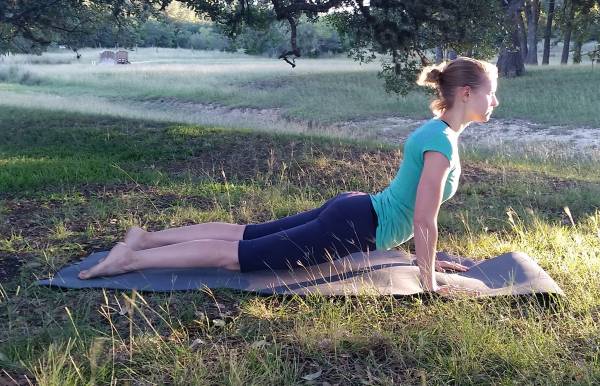
Notice this second way of doing it doesn’t look like as much as a back bend. It doesn’t feel like it either – it feels more like a plank with a bit of backbend. When I drew my ribs back it was much harder to overextend in the lumbar spine.
What’s interesting to me is that although the second photo might not look as intense as the first, it was much harder for me to hold. Instead of just using the muscle groups that tend to be stronger, it forced me to activate lesser-used regions of my upper body.
How Does My Yoga Practice Serve Me?
DeLora also asked me to do my upavistha konasana for the class. After demonstrating the pose, I was expecting to hear what I was doing wrong. Instead DeLora pointed out that this is an easy pose for me. In fact, I don’t really gain much from doing it. It might feel good, and there’s no reason to stop doing it, but is it helping me progress in my practice? Not really.
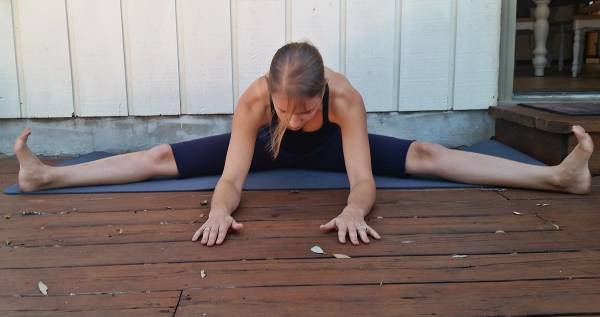
Upavistha konasana – Wide-angle seated forward bend
During one of our centering practices, DeLora used the phrase, “Let go of what does not serve you.” She used the imagery of releasing leaves into a stream, letting go of the things that hinder us or simply do not help us grow.
How often do we choose to focus on the things that feel good, without asking how they serve us? Maybe today you want to do the things that feel good, and that’s fine. But at some point we can all benefit from asking the question: How is this pose, this workout, this action serving and helping me? Is it helping at all?
Until next time!

